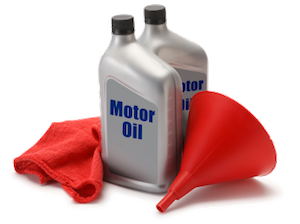home | e-mail | terms of use
oilspecifications.org
Introducing the ACEA A7/B7 and C6 Specifications
The 2021 and the 2022 update to the ACEA sequences bring new categories for passenger cars and light duty vehicles. ACEA A7/B7's predecessor, the A5/B5 category remains for now and can still be used by the engine oil manufacturers. ACEA C5 remains too, while the new categories cover the same use cases, but with more stringent technical expectations. ACEA A3/B3 is gone, just like ACEA C1. The former no longer meets the technical expectations of the current engines, while the latter has been unused by car manufacturers during the recent years.
The new categories for passenger cars and light duty commercial vehicles are ACEA A7/B7 and ACEA C6. The most important property of the new categories compared to the old ones is that they provide effective protection against the Low Speed Preignition (LSPI) and the residue formation in turbo chargers.
A7/B7
The ACEA A7/B7 category can be viewed as the updated version of A5/B5. According to ACEA regulations a new category needs to be introduced when a required test significantly changes the existing category. That's why the introduction of a new category became necessary. Motor oils meeting the A7/B7 criteria are long drain interval, high SAPS lubricants. The category was designed for high performance petrol and light diesel engines that require low viscosity oils. ACEA A7/B7 oils usually have low HTHS values (2.9–3.5 cP) and are formulated using Group III base oils. This also means that – just like A5/B5 oils – can be unsuitable for engines that require high HTHS oils. Compared to A5/B5, A7/B7 motor oils provide better anti LSPI protection, while also keeping the turbocharger cleaner. The latter feature is especially prevalent in case of direct injection diesel engines with turbochargers. It is not yet clear, which OEM specifications will tie into the A7/B7 spec, but we can be sure that it is going to be important whenever high performance, turbocharger cleanliness and LSPI prevention play important roles. The new tests that this specification adds to those required by A5/B5 are the following:
- CEC L-114-19 Toyota turbocharger residue test (diesel)
- ASTM D8291 Sequence IX low RPM preignition test for GDI Turbo
- ASTM D8291 Sequence X chain wear protection for GDI
ACEA C6
Stable, stay-in-grade motor oil category. It demands mid-SAPS properties, thus compatibility with certain emission control systems. Oils meeting this specification are suitable petrol and direct injection diesel engines of passenger cars and light-duty commercial vehicles. This specification expects oils to have a HTHS viscosity of at least 2.6 mPa*s, which means that these oils may be unsuitable for certain engines. Oils meeting this specification provide better LSPI protection than C5 oils. They also provide better anti-wear properties for turbocharged diesel engines and keep the turbocharger cleaner. This is especially prevalent in case of direct injection diesel engines. ACEA C6 is largely based on ACEA C5, but also introduces the following new tests:
- CEC L-107-19 M271 EVO black sludge test
- ASTM D8256 Sequence VH, low temperature sludge test
- ASTM D8350 SequenceIVB, valvetrain wear test
- CEC L-117-20 VW TDI 3, DI diesel piston cleanliness & ring sticking test
- JASO FE M366, fuel economy test
- CEC L-114-19 turbocharger compressor deposit test
- ASTM D2891 Sequence IX Low-speed pre-ignition GDI turbo
- ASTM D8279 Sequence X, Chain wear GDI


